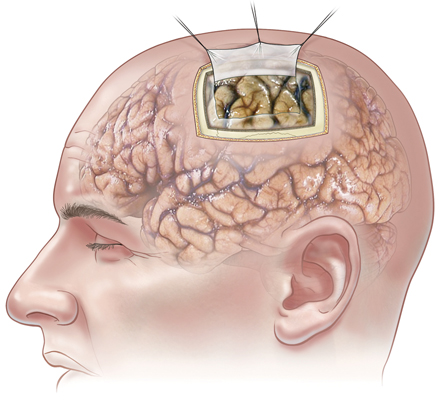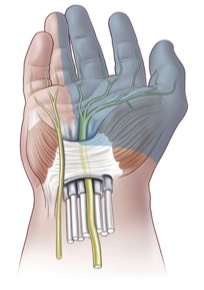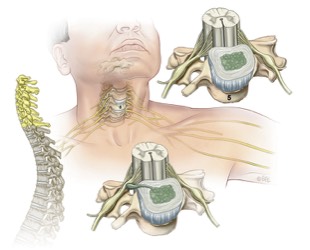Conditions
________________________________________________________________
Conditions of Brain, Peripheral Nerve & Spine

Conditions of the Brain
A cerebral aneurysm is an outpouch, or balloon growth from the side of a blood vessel wall in the brain. The aneurysm may grow very large in size, compressing vital nerves in the brain, or may fill with small clots that can break off and travel into the blood vessels of the brain and cause a stroke. However, more commonly an aneurysm may rupture, causing blood to pour out of the blood vessels into the space around the brain, called the subarachnoid space, resulting in a subarachnoid haemorrhage Read more >
Most people with sports-related concussion will have resolution of symptoms in a relatively short time.
However, some people with concussion have a very slow recovery period. If the athlete returns to sport whilst still symptomatic, the athlete places him/herself at great risk of causing catastrophic brain injury.
Therefore, all symptomatic concussed athletes must be removed from the field/track, and are not to return to training or game-play until cleared by a medical practitioner with appropriate expertise in managing sports-related concussion. Read more >

Conditions of Peripheral Nerves
The carpal tunnel is located at the base of the palm of the hand. The Median Nerve runs through the carpal tunnel. When the carpal tunnel is narrowed between the thick carpal ligament and the underlying carpal bones, the median nerve becomes compressed, and this results in nerve dysfunction. Read more >
As peripheral nerves travel from the spinal cord and into the limbs (arms & legs), they pass through and under membranes, ligaments and muscles, and across bones and joints. At any of these points, a nerve may become compressed, or squashed….
Commonly entrapped nerves include the Common Peroneal Nerve, Tibial Nerve in the Tarsal Tunnel, Suprascapular Nerve, Posterior Interosseous Nerve and Meralgia Paresthetica....
Read more >
There are 3 types of TOS classically described, although only the first two are truly TOS….. Read more >

Conditions of the Spine
Acute low back pain is common. The type of pain can range from an ache to shooting pains or spasms. It can last up to three months, but most people feel better in a few days or weeks….. Read more >
_____________________________________________________________
Concussion in Sport
Gavin Davis is an internationally recognised expert on concussion in sport in Adults and Children.
For more information on Concussion in Sport click here
*Articles on this site are provided for informational purposes only and are not meant as a substitute for the advice provided by your own doctor or other medical professional. You should not use the information contained herein for diagnosing or treating a health problem or disease, or prescribing any medication. If you have or suspect that you have a medical problem, promptly contact your health care provider.